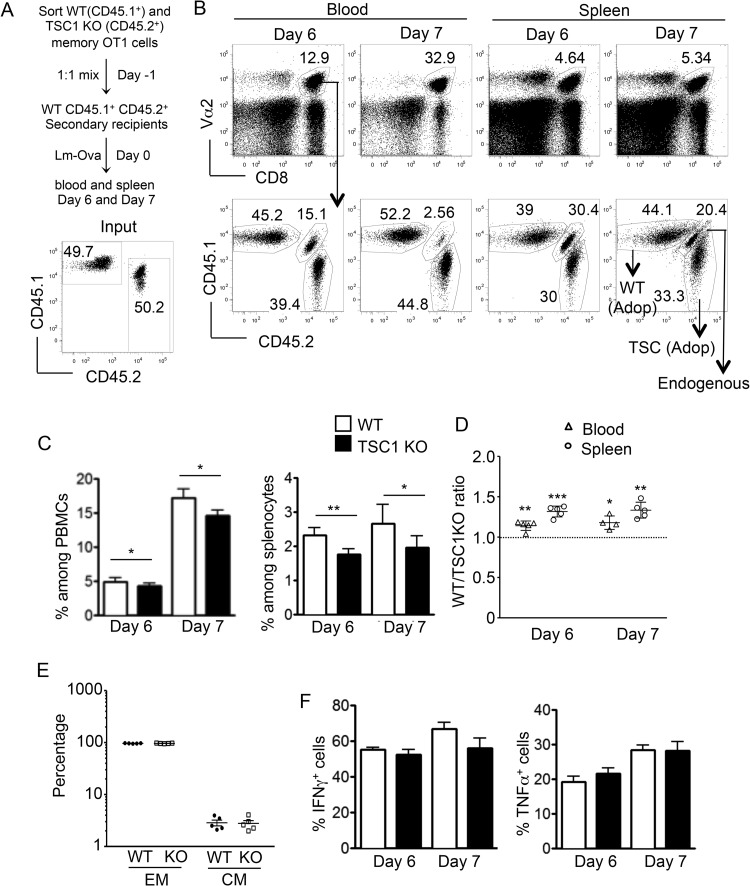FIG 8.
CD8 memory responses are moderately impaired in the absence of TSC1. (A) Schematic representation of the experimental design showing competitive adoptive transfers of WT OT1 and TSC1 KO OT1 memory cells into WT CD45.1+ CD45.2+ recipients. The percentages of WT and TSC1 KO cells during adoptive transfer are shown at the bottom. (B) Representative fluorescence-activated cell sorter analyses of peripheral blood and spleen samples showing the percentages of Vα2+ CD8 cells among the total PBMCs and splenocytes (top) and WT (CD45.1+ CD45.2−), TSC1 KO (CD45.1− CD45.2+), and endogenous (CD45.1+ CD45.2+) populations within the gated Vα2+ CD8 population (bottom) at the postchallenge times indicated. Adop, adoptive transfer. (C) Percentages of WT and TSC1 KO cells among the total PBMCs and splenocytes at the postchallenge times indicated. (D) WT-to-TSC1 KO CD8 cell ratios in individual mice. (E) Percentages of donor-derived WT and TSC1 KO effector memory (EM)- and central memory (CM)-like cells on day 7 after Lm-Ova infection. (F) Percentages of IFN-γ+ and TNF-α+ cells within the WT and TSC1 KO splenocyte populations at the postchallenge times indicated, as detected by intracellular staining and flow cytometry after 5 h of SIINFEKL stimulation. The mean ± the standard error of the mean was calculated for five mice per group. The data shown are representative of three independent experiments. *, P < 0.05; **, P < 0.01; ***, P < 0.001 (Student t test).

